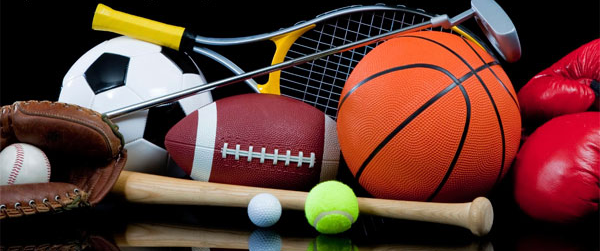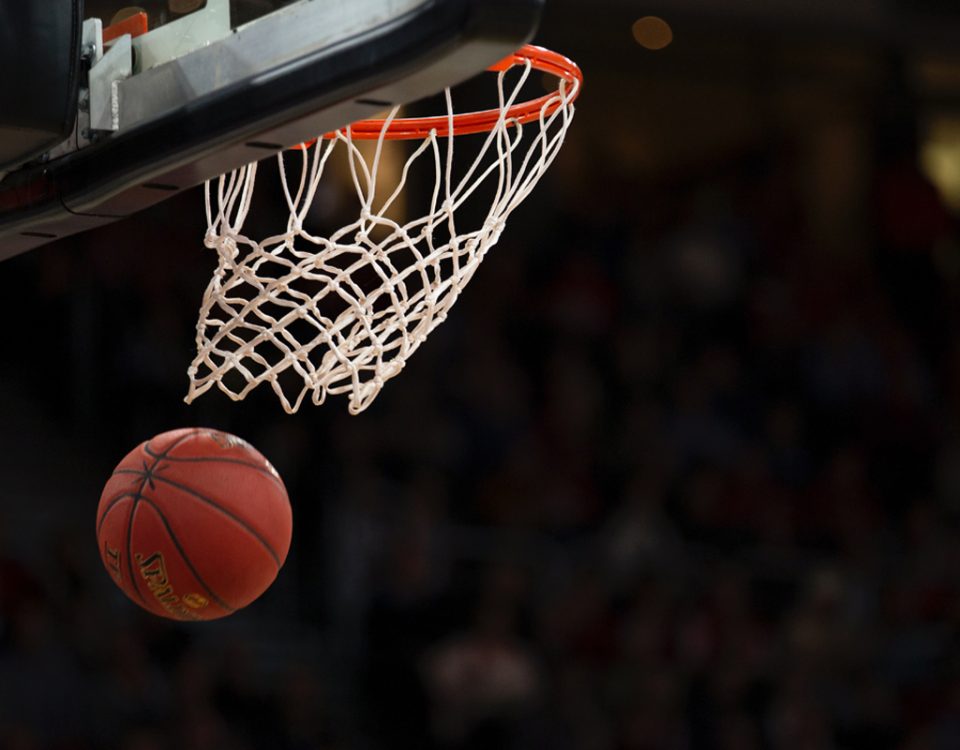
The NCAA Committee on Infractions Has Spoken: Stephen F. Austin State University
May 27, 2020Thunder Dan Majerle v. Grand Canyon University: Dispute Over Termination
May 28, 2020In March 2014, while the NCAA was litigating O’Bannon I, FBS football and D1 men’s and women’s basketball players filed several antitrust actions against the NCAA and eleven D1 conferences that were transferred to and, with one exception, consolidated before the same district court presiding over O’Bannon I. Rather than confining their challenge to rules prohibiting NIL compensation, the Student-Athletes sought to dismantle the NCAA’s entire compensation framework.
In December 2015, the district court certified three injunctive relief classes comprised of (i) FBS football players, (ii) D1 men’s basketball players, and (iii) D1 women’s basketball players. Each subclass consists of student-athletes who have received or will receive a full grant-in-aid during the pendency of this litigation.
Nearly a year after the Ninth Circuit’s decision in O’Bannon II, the NCAA sought judgment on the pleadings, invoking res judicata. It argued that O’Bannon II “requires nothing more of the NCAA than that it permit its member schools to provide student-athletes with their full education-related [COA].” Because the NCAA had already amended its rules to satisfy that requirement, it reasoned that any post-O’Bannon antitrust challenges to its compensation rules must fail. The district court denied the motion. It explained that the Student-Athletes, unlike the O’Bannon plaintiffs, had challenged, among other things, limits on non-cash, education-related benefits. It acknowledged the possibility that O’Bannon forecloses a type of relief—lifting restrictions on cash payments untethered to educational expenses—but declined to read it more broadly than that.
Cross-motions for summary judgment followed. The district court again rejected the NCAA’s preclusion arguments. As to the merits, it adopted, at the parties’ request, the market definition from O’Bannon I: the market for a college education or, alternatively, student-athletes’ labor. It then granted the Student-Athletes summary judgment at the Rule of Reason’s first step, as the NCAA did not meaningfully dispute that the challenged rules have anticompetitive effects in the relevant markets. At the Rule of Reason’s second step, it determined that the NCAA had raised triable issues as to whether its rules have the procompetitive effect(s) of maintaining the popularity of its elite college basketball and football products or integrating student-athletes into the wider campus community. Last, the district court found that Student-Athletes had proffered sufficient evidence to support their two proposed LRAs: (i) allowing individual conferences, but not the NCAA, to regulate student-athlete compensation; or (ii) enjoining NCAA rules that restrict both non-cash education-related benefits and benefits that are incidental to athletic participation.
After a ten-day bench trial, the district court entered judgment for the Student-Athletes, in part. The court concluded that NCAA limits on education-related benefits are unreasonable restraints of trade, and accordingly enjoined those limits; however, the court declined to hold that NCAA
limits on compensation unrelated to education likewise violate section 1.
The panel of the Ninth Circuit consisting of Sidney R. Thomas, Ronald M. Gould, and Milan D. Smith, Jr. (“Panel”) affirmed the district court’s order in an antitrust action, enjoining the NCAA from enforcing rules that restrict the education-related benefits that its member institutions may offer students who play FBS football and Division I basketball.
In O’Bannon II, the Ninth Circuit affirmed in large part the district court’s ruling that the NCAA illegally restrained trade, in violation of section 1 of the Sherman Act, by preventing FBS football and D1 men’s basketball players from receiving compensation for the use of their names, images, and likenesses, and the district court’s injunction insofar as it required the NCAA to implement the less restrictive alternative of permitting athletic scholarships for the full cost of attendance.
In this matter, the Panel affirmed the district court’s conclusion that O’Bannon II did not foreclose this litigation as a matter of stare decisis or res judicata.
In this matter, the Panel held that the district court properly applied the Rule of Reason in determining that the enjoined rules were unlawful restraints of trade under Section 1 of the Sherman Act. The Panel concluded that the student-athletes carried their burden at the first step of the Rule of Reason analysis by showing that the restraints produced significant anticompetitive effects within the relevant market for student-athletes’ labor on the gridiron and the court.
At the second step of the Rule of Reason analysis, the NCAA was required to come forward with evidence of the restraints’ procompetitive effects. The district court properly concluded that only some of the challenged NCAA rules served the procompetitive purpose of preserving amateurism and, thus, improving consumer choice by maintaining a distinction between college and professional sports. Those rules were limits on above-cost-of-attendance payments unrelated to education, the cost-of-attendance cap on athletic scholarships, and certain restrictions on cash academic or graduation awards and incentives. The Panel affirmed the district court’s conclusion that the remaining rules, restricting non-cash education-related benefits, did nothing to foster or preserve consumer demand. The Panel held that the record amply supported the findings of the district court, which reasonably relied on demand analysis, survey evidence, and NCAA testimony.
The Panel affirmed the district court’s conclusion that, at the third step of the Rule of Reason analysis, the student-athletes showed that any legitimate objectives could be district court identified a less restrictive alternative of prohibiting the NCAA from capping certain education-related benefits and limiting academic or graduation awards or incentives below the maximum amount that an individual athlete may receive in athletic participation awards, while permitting individual conferences to set limits on education-related benefits. The Panel held that the district court did not clearly err in determining that this alternative would be virtually as effective in serving the procompetitive purposes of the NCAA’s current rules, and could be implemented without significantly increased cost.
The Panel found that the district court reasonably concluded that uncapping certain education-related benefits would preserve consumer demand for college athletics just as well as the challenged rules do. Such benefits are easily distinguishable from professional salaries, as they are “connect[ed] to education”; “their value is inherently limited to their actual costs”; and “they can be provided in kind, not in cash.”
Finally, the Panel held that the district court’s injunction was not impermissibly vague and did not usurp the NCAA’s role as the superintendent of college sports. The Panel also declined to broaden the injunction to include all NCAA compensation limits, including those on payments untethered to education. The Panel concluded that the district court struck the right balance in crafting a remedy that both prevented anticompetitive harm to student-athletes while serving the procompetitive purpose of preserving the popularity of college sports.
Judge M. Smith wrote a blistering concurring opinion expressly concern that the current state of antitrust law reflects an unwitting expansion of the Rule of Reason inquiry in a way that deprived the student-athletes of the fundamental protections that the antitrust laws were meant to provide them. In pertinent part, Judge Smith stated:
Student-Athletes are talented, hardworking individuals who have dedicated their young lives to excelling in specific sports. As amici describe, Student-Athletes work an average of 35–40 hours per week on athletic duties during their months-long athletic seasons, and most work similar hours during the off-season to stay competitive. At the same time, most of them do their best to succeed academically, managing to devote on average another 40 hours per week to classes and study. Nevertheless, their coaches and others in the Division 1 ecosystem make sure that Student-Athletes put athletics first, which makes it difficult for them to compete for academic success with students more focused on academics. They are often forced to miss class, to neglect their studies, and to forego courses whose schedules conflict with the sports in which they participate. In addition to lessening their chances at academic success because of the time they must devote to their sports obligations, Student-Athletes are often prevented from obtaining internships or part-time paying jobs, and, as a result, often lack both income and marketable work experience. Meanwhile, the grueling hours and physical demands of college sports carry significant health risks, such as sleep deprivation, stress, broken bones, and even potential brain damage. Despite their best efforts, however, fewer than 5% of Student-Athletes will ever play at a professional level, and most of those lucky few will stay in the pros only a few short years. In short, the college years are likely the only years when young Student-Athletes have any realistic chance of earning a significant amount of money or achieving fame as a result of their athletic skills.
For all their dedication, labor, talent, and personal sacrifice, Student-Athletes go largely uncompensated. They may receive tuition for an academic experience that they cannot take full advantage of, minimal living expenses, and some lavish perks that do nothing for their present or future financial security. However, that is not because their athletic services have little value. On the contrary, the NCAA and Division 1 universities make billions of dollars from ticket sales, television contracts, merchandise, and other fruits that directly flow from the labors of Student-Athletes. A number of Division 1 head football coaches take home multi-million-dollar salaries that exceed those of many NFL coaches. Moreover, contrary to the NCAA’s representations about the importance of “amateurism,” the evidence in this case shows that college sports viewership has only increased since we reduced some limitations on student-athlete compensation in O’Bannon II.
***
Although the district court correctly applied our precedents, the result of this analysis seems to erode the very protections a Sherman Act plaintiff has the right to enforce. Here, Student-Athletes are quite clearly deprived of the fair value of their services. Alston, 375 F. Supp. 3d at 1068. As the district court found, while the NCAA and its conferences generate billions in revenue from college sports, they “have monopsony power to restrain student-athlete compensation in any way and at any time they wish, without any meaningful risk of diminishing their market dominance.” Id. at 1063,1070. Under the Rule of Reason analysis we affirm today, so long as the NCAA cites consumer demand for college sports, we allow it to artificially suppress competition for collegiate athletes’ services by limiting their compensation. Instead of requiring the NCAA to explain how those limits promote schools’ competition for athletes, we leave Student-Athletes with little recourse under the antitrust laws. Student-Athletes are thus denied the freedom to compete and, in turn, “of compensation they would receive in the absence of the restraints.” Id. at 1068.
For any questions, feel free to contact Christian Dennie at cdennie@bgsfirm.com.

